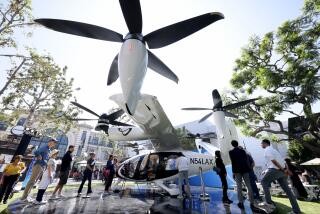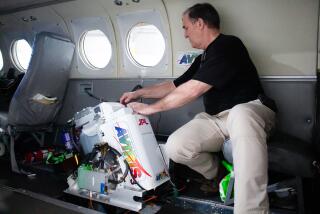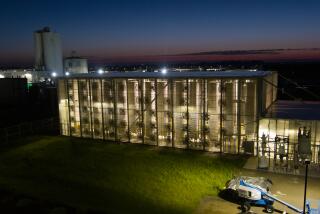THINGS TO COME : Clean, Green Flying Machine
- Share via
Catherine Anderson and Bob Curtin swear it’s the future. But when their eight-foot-long, 100-foot-wide solar-powered plane is wheeled out of its hangar at Edwards Air Force Base, it looks more like a balsa wood model made by a 50-foot kid.
Don’t be fooled. Their low-power, high-tech idea could undermine the growing global satellite-launching business. The young engineers of Monrovia’s AeroVironment say that planes like the pilotless, radio-controlled Pathfinder can do most of the jobs a satellite does, but at a fraction of the cost. Development so far has cost a cheap-for-serious-science $2.5 million; funds have come from several government and private sources.
They hope to fly the plane in a test this summer at 65,000 feet. If it’s successful, AeroVironment, which also developed much of the technology for GM’s Impact electric car, plans to launch a bigger version--Helios, with a 200-foot wingspan.
“On Helios,” says Anderson, “there’ll be a large enough solar array soaking up sun-power during the day to fly the plane through the night.” And Curtin says its bigger payload would give it the potential to carry out satellite duties “without paying the $100 million a year a satellite typically costs to maintain in orbit.” Solar planes could do the same job for about $20 million, he says.
One added benefit: Pollution-free take-offs. Many satellites are placed in orbit by a space shuttle, which destroys more ozone in a single launch than the annual chlorofluorocarbon output of most individual industrial plants.
More to Read
Inside the business of entertainment
The Wide Shot brings you news, analysis and insights on everything from streaming wars to production — and what it all means for the future.
You may occasionally receive promotional content from the Los Angeles Times.










